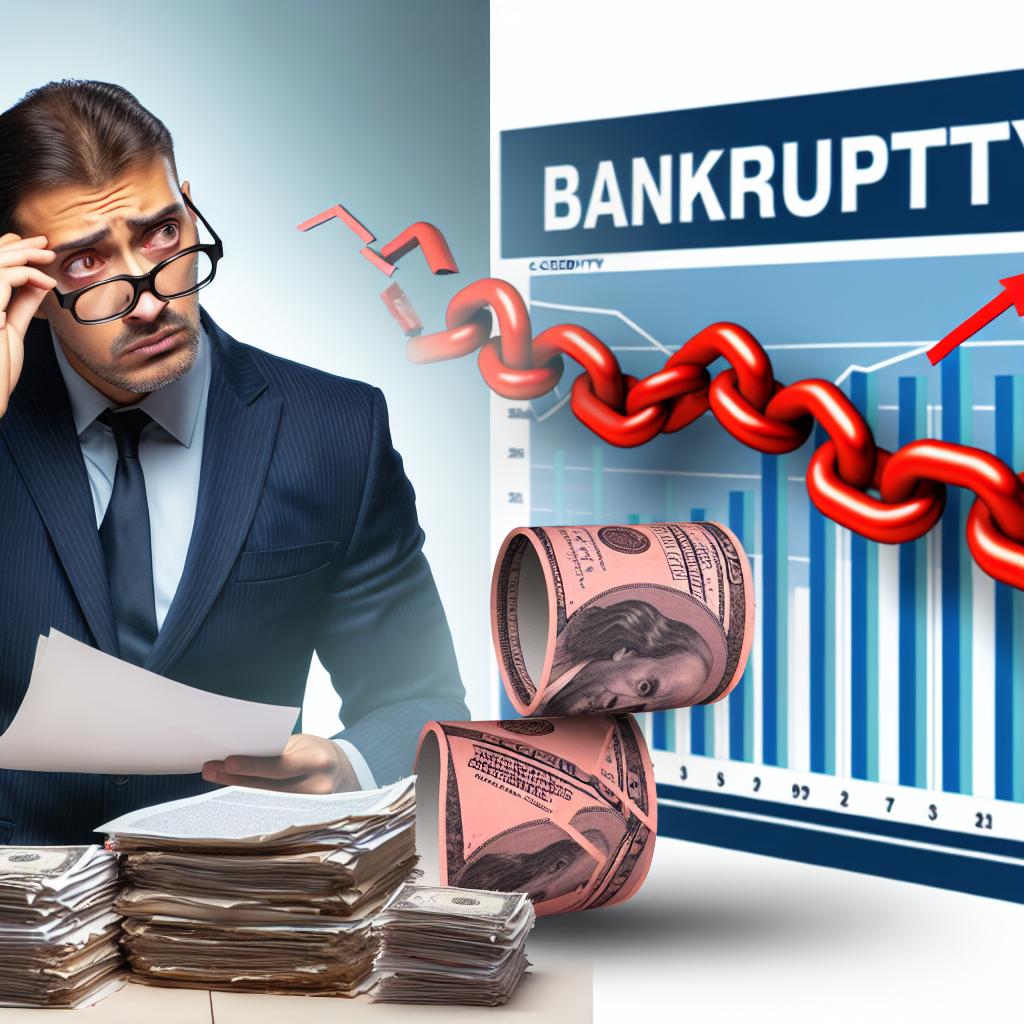The Impact of Bankruptcy on Loans and Credit
When individuals or businesses face financial distress, bankruptcy can emerge as a viable legal remedy. While it offers a fresh start, bankruptcy has notable effects on various financial aspects, particularly loans and credit. This article delves into the intricate ways bankruptcy influences existing loans, credit scores, access to new credit, and the need for comprehensive long-term financial planning.
Understanding Bankruptcy
Bankruptcy is a legal proceeding initiated when an entity is unable to repay outstanding debts. During this process, certain debts may be discharged, or a structured repayment plan may be established to satisfy creditors. There are different types of bankruptcy that apply to individuals and businesses, each with unique characteristics and processes.
Chapter 7: Known as “liquidation bankruptcy,” Chapter 7 involves the sale of non-exempt assets to pay off creditors. The remaining unpaid debts are typically discharged afterward, allowing the debtor a fresh financial start. However, not all debts can be discharged under Chapter 7.
Chapter 13: Often referred to as “wage earner’s bankruptcy,” Chapter 13 allows individuals with a regular income to develop a plan to repay part or all of their debts in installments over a three to five-year period. This option offers the possibility to save assets from foreclosure.
Chapter 11: Primarily designed for businesses, Chapter 11 involves reorganizing debts and business affairs to continue operating. This plan allows companies to propose a financial restructuring, aiming to return to profitability and repay creditors over time.
Effects on Existing Loans
Bankruptcy has a profound influence on existing loans, which varies depending on whether these loans are secured or unsecured.
Secured Loans: Loans backed by collateral, such as mortgages or car loans, require the borrower to decide on the continuation of payments. If they choose not to make payments, creditors may repossess the assets. However, in a bankruptcy case, a “stay” can temporarily prevent repossession until resolutions through the proceedings occur.
Unsecured Loans: Debts not backed by collateral, such as credit card debts or personal loans, may be discharged through bankruptcy. While this can relieve immediate debt burdens, it does not apply to all unsecured debts, as some (like student loans or alimony) may still need repayment.
Credit Score Consequences
Filing for bankruptcy has a significant impact on credit scores and financial reputation.
Initial Impact: The most immediate effect is a decrease in the credit score by 200 points or more, depending on the individual’s prior credit behavior. This drop in the credit score reflects deep financial difficulty and undermines future creditworthiness.
Duration on Credit Report: The impact of bankruptcy is long-lasting; a Chapter 7 bankruptcy is visible on a credit report for up to ten years, while Chapter 13 appears for up to seven years. This notifies any potential lenders of the individual’s financial past challenges, potentially making borrowing more difficult.
Accessing New Credit
Post-bankruptcy, accessing new credit can still occur, although it generally includes significant hurdles and adjustments.
Higher Interest Rates: Bankruptcy designates an individual or business as a high-risk borrower. Due to this increased risk perception, any new loans are likely at unfavorable interest rates, reflecting the likelihood of defaulting.
Credit Rebuilding: Recovering creditworthiness involves taking strategic, small steps. Acquiring a secured credit card, which requires a deposit and works like a regular credit card, is a common step. Additionally, becoming an authorized user on an account of someone with a strong credit history can help rebuild credit. Responsible use and on-time payments gradually help repair credit scores.
Long-term Financial Planning
The ramifications of bankruptcy extend beyond immediate credit and loan concerns, necessitating careful, forward-looking financial planning.
Financial planning after bankruptcy goes far beyond simple budgeting. It includes developing a thorough understanding of one’s financial health, setting achievable financial goals, and maintaining strict discipline when managing new credit or debt. Seeking professional guidance can accelerate this process.
Financial Counseling: Engaging with financial counselors or credit repair services offers structured support and tailored strategies to manage post-bankruptcy life. These experts can provide insights into credit reports, budgeting, and tips for future financial management.
Legal Consultation: Consulting with legal professionals who specialize in bankruptcy can also help navigate the aftermath, offering advice on the best ways to handle remaining debts or financial obligations.
Although daunting, bankruptcy can be an opportunity for restructuring one’s financial priorities. By focusing on rebuilding and carefully managing finances, individuals, and businesses can often emerge stronger. For a more comprehensive understanding of managing post-bankruptcy finances, visiting resources such as the Consumer Financial Protection Bureau offers additional guidance and support.
Overall, understanding the effects of bankruptcy on loans, credit, and long-term financial planning is essential for anyone considering this path. Through informed decision-making and strategic financial management, individuals and businesses can work towards restoring their financial health and stability.
